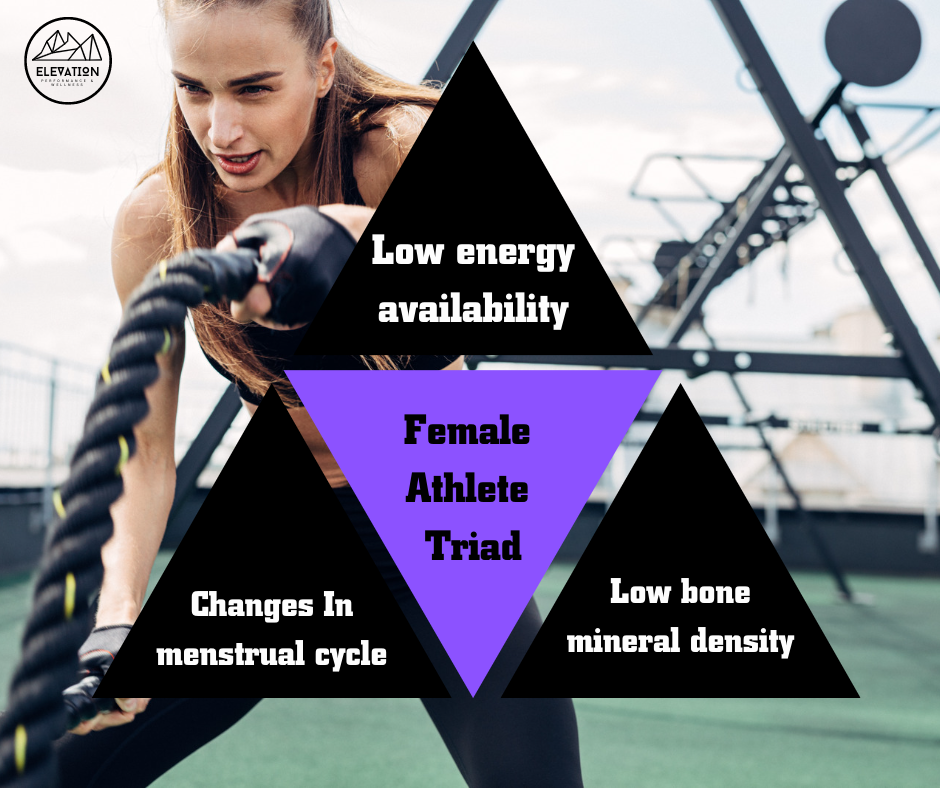Female athletes are no strangers to the pressures of performing at a high level while maintaining a strict diet and training regimen. For some female athletes, these pressures can be especially intense. Therefore, many athletes report feelings of burnout, exhaustion, and even injury.
While there are a variety of factors that can contribute to burnout in female athletes, one potential culprit is the female athlete triad.
What is the female athlete triad?
A simple google search will tell you it is a disorder that encompasses disordered eating, amenorrhea (irregular menstrual cycle), and osteoporosis.
The triad is composed of 3 components: low energy availability, low bone mineral density, and changes in the menstrual cycle.

Low energy availability can cause serious damage to the body if not properly addressed.
Some of the damages can have a root cause in lack of energy from food. This leads to decreased muscle mass, and declines in performance, which also opens the door to increased injury risks. Bone mineral density can decrease as menstrual cycle disruptions increase.
A healthy, balanced diet, plenty of sleep, and stress management can all help prevent this burnout from happenings.
The intensity of the strength programs, mixed with the hundreds of hours of training can take a huge toll on the athletes’ stress levels. It is so important to watch for signs of overtraining syndrome! (yes, that’s a real thing, no the athletes are not being lazy).
Hormonal imbalances, and excess mental, and physical stress can all be potential causes of overtraining.
Symptoms of this can include:
- Significant decreases in performance
- Sudden changes in the menstrual cycle
- Insomnia
- Fatigue
- Mood irritability
It is important that athletes listen to their bodies and take appropriate rest, dietary habits, and recovery time.
Speaking to a healthcare professional can be a great start to a healing journey of this. Overall, these athletes face unique challenges in this amazing sport, and burnout is an unfortunate potential consequence. While there are certainly other contributing factors that can lead to burnout and overtraining, the female athlete triad is a culprit that certainly deserves a bit more attention.
In conclusion, by promoting healthy eating habits, appropriate training regimens, and a balanced approach to competition, coaches and healthcare professionals can help female athletes avoid burnout and achieve their full potential in the sport they love.



